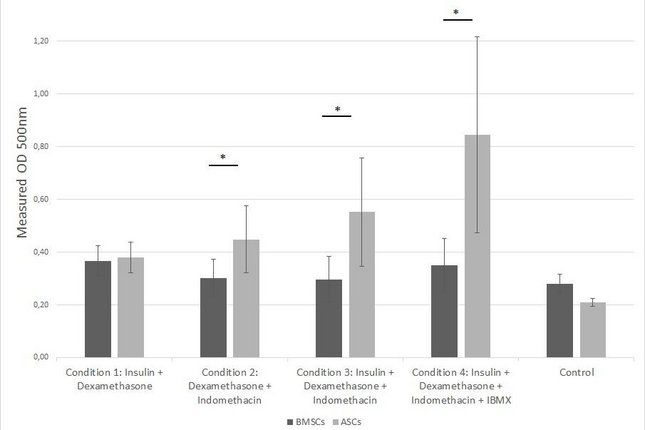
Mesenchymal stem cells (MSCs), derived from bone marrow (BMSCs) or adipose tissue (ASCs), can be used for adipogenic differentiation. To induce adipogenesis, three or four components are usually included to the cultivation medium; insulin, dexamethasone, indomethacin, and isobuthylmethylxanthine (IBMX), making standardization difficult. This study aims to determine the effectivity of a medium containing only two components for adipogenic differentiation, comparing BMSCs and ASCs. Four donors of each cell source were used for cultivation (n=4). After cell expansion, the cells were cultivated for three weeks, using five different combinations of the medium, one of which does not contain any added components and is used as control group. After three weeks, cells are stained and analyzed. The optical density (OD) is measured to determine the amount of adipocytes that has grown. The measured OD is always higher for the ASCs compared to BMSCs (p = 0.025). For BMSCs, the highest OD is measured in condition 1, containing insulin and dexamethasone. For ASCs, the OD is highest in condition 4, containing all four components. However, there is no significant difference between the various conditions for both BMSCs (p = 0.831), and ASCs (p = 0.090). Concluding that ASCs are more suitable for adipogenic differentiation, and function best using a three- or four component medium.